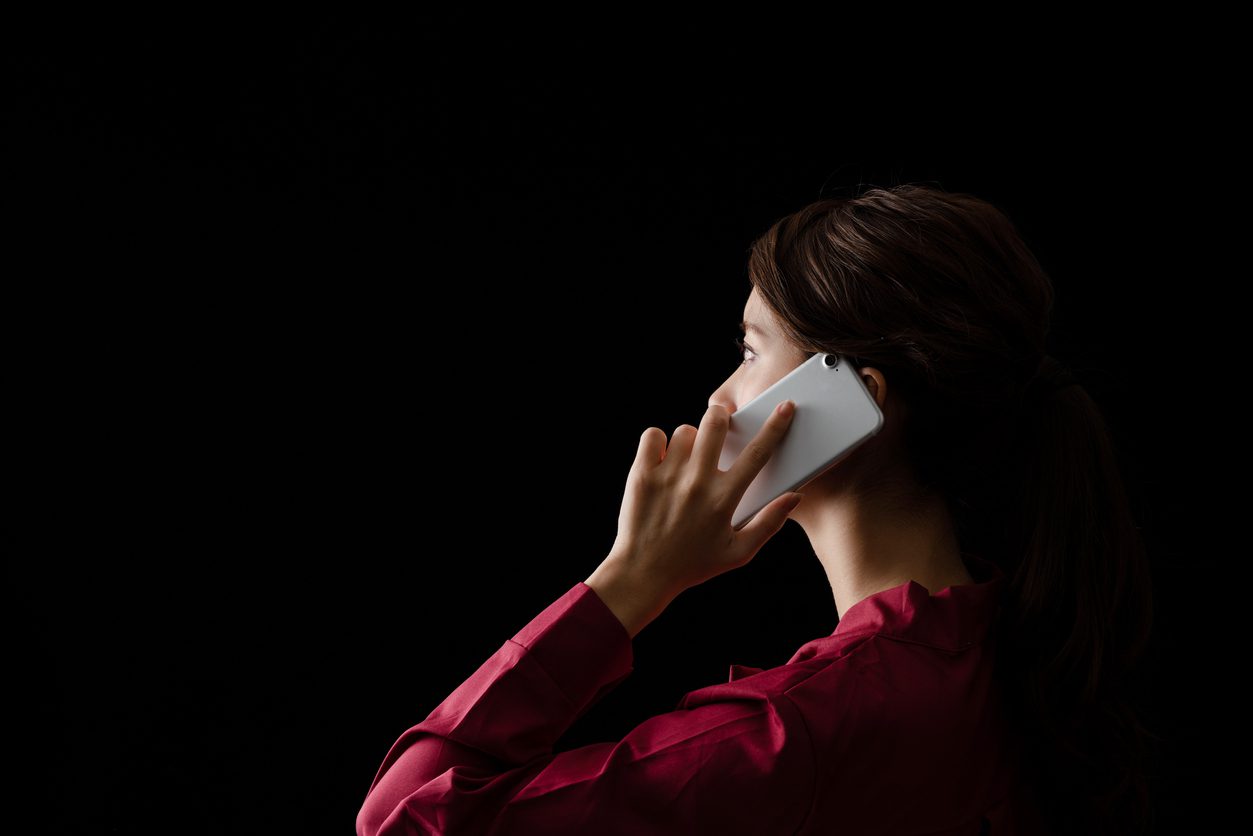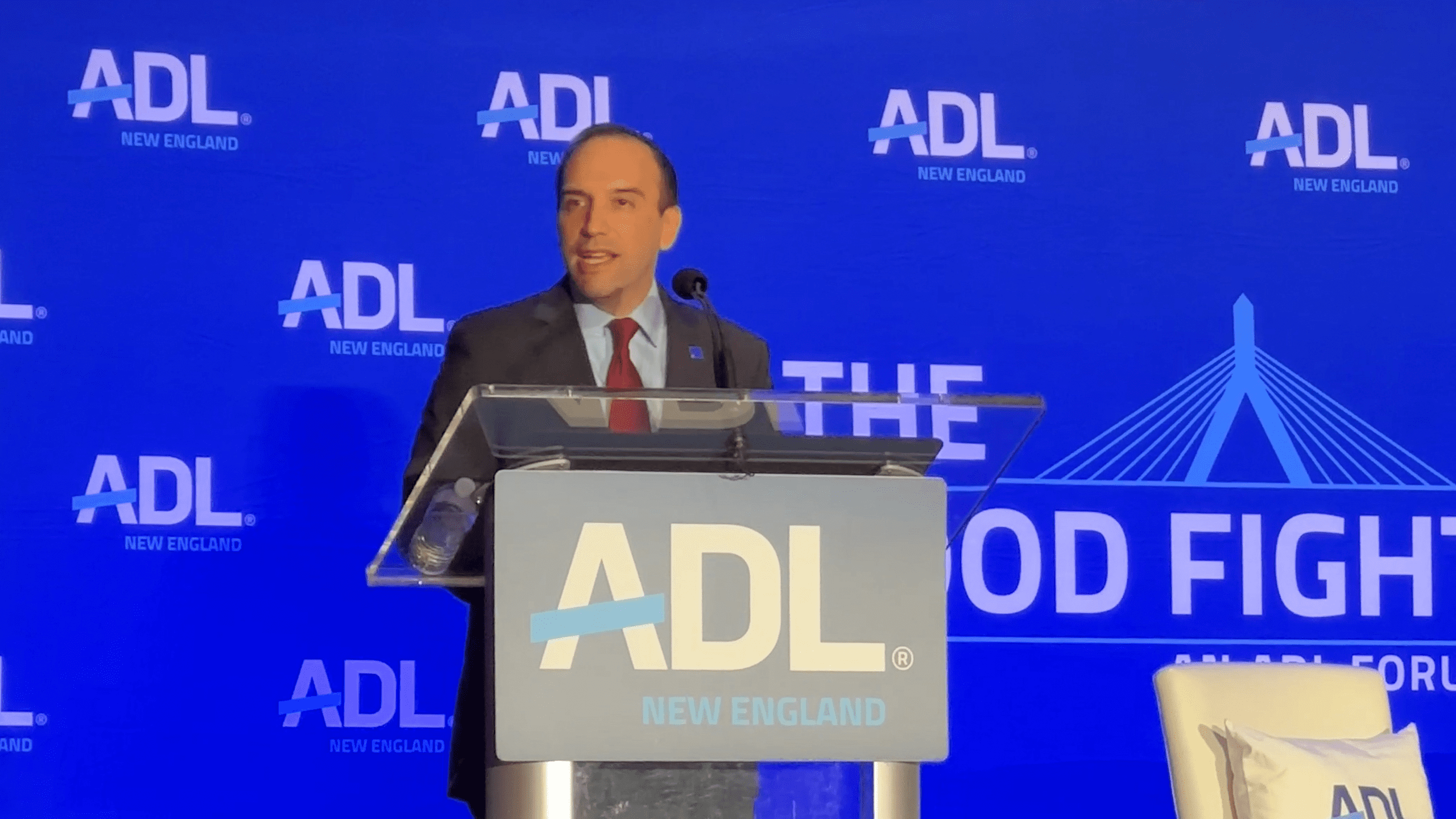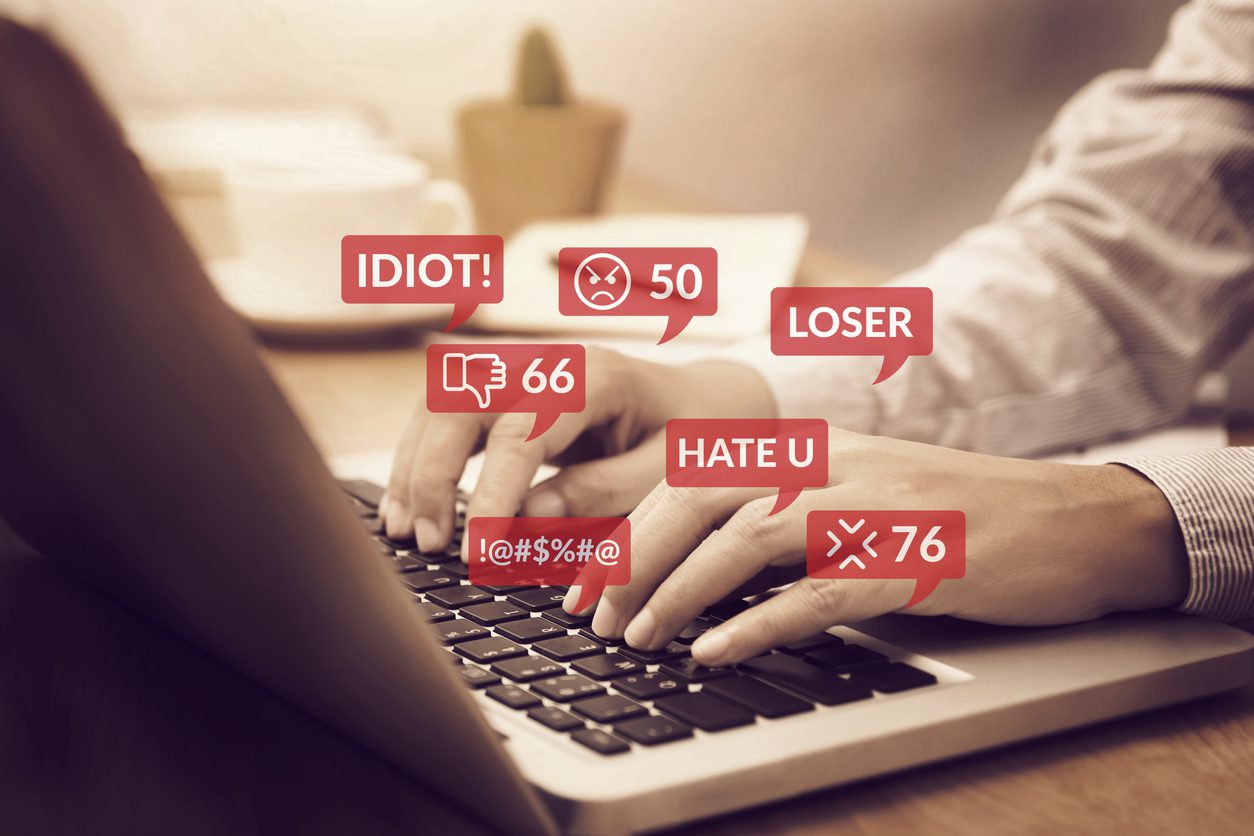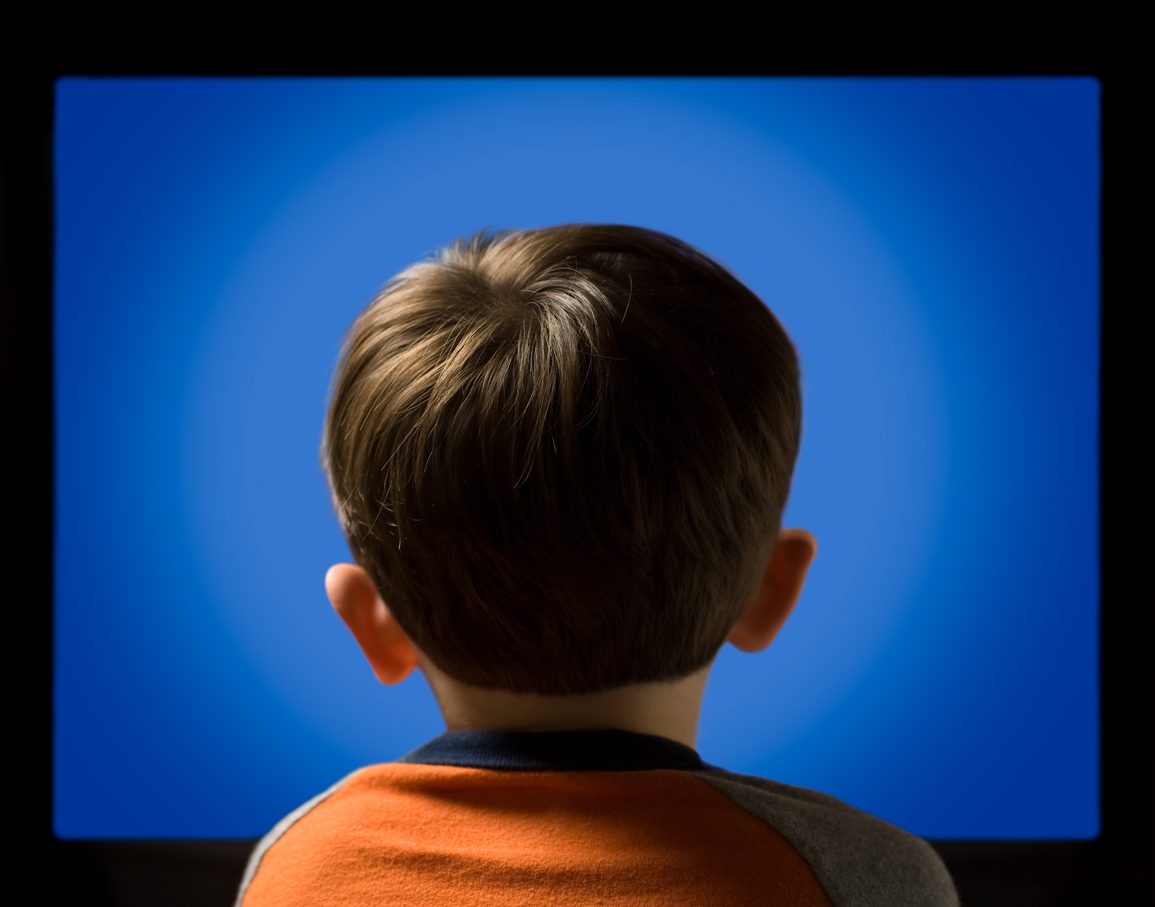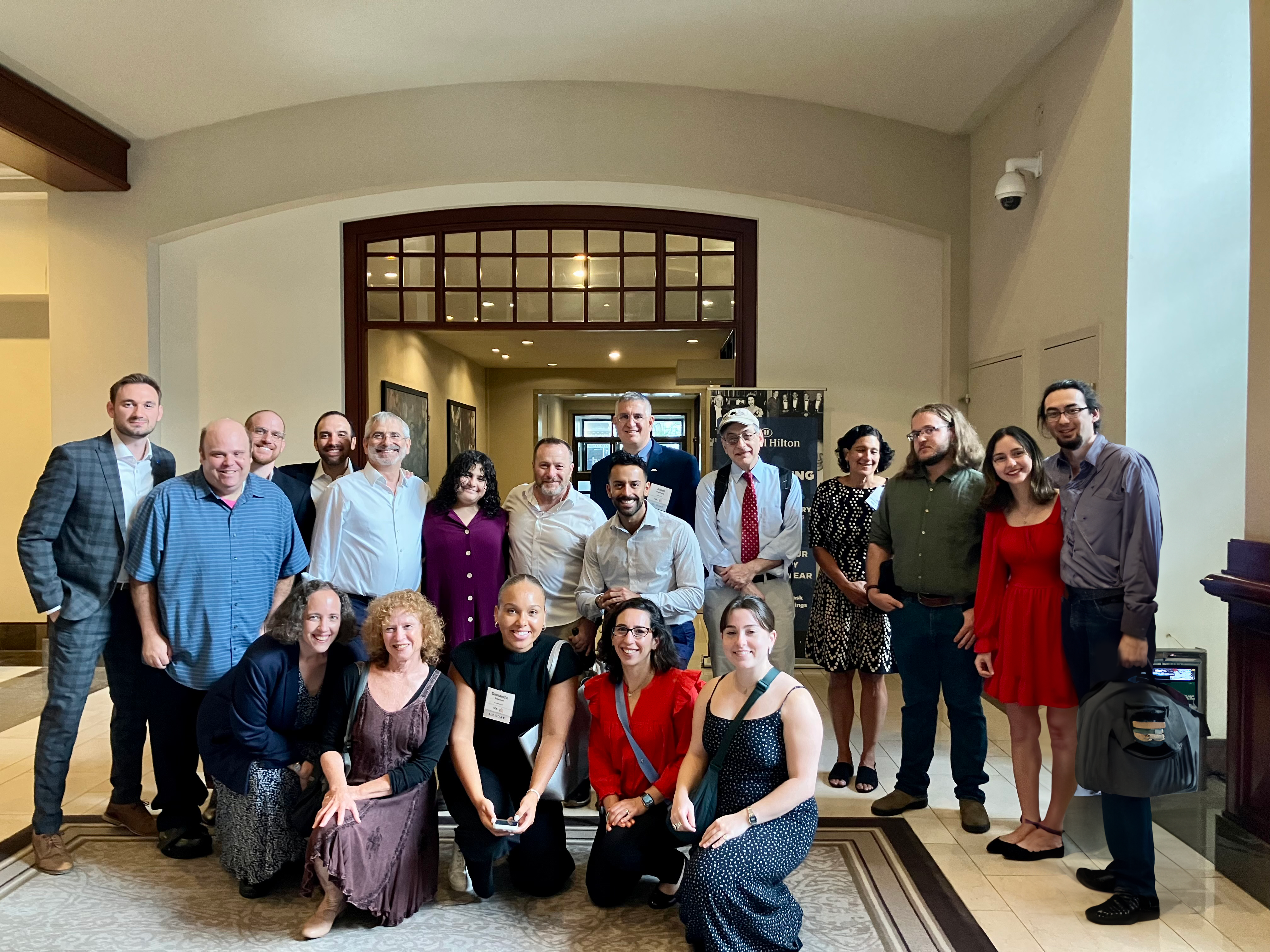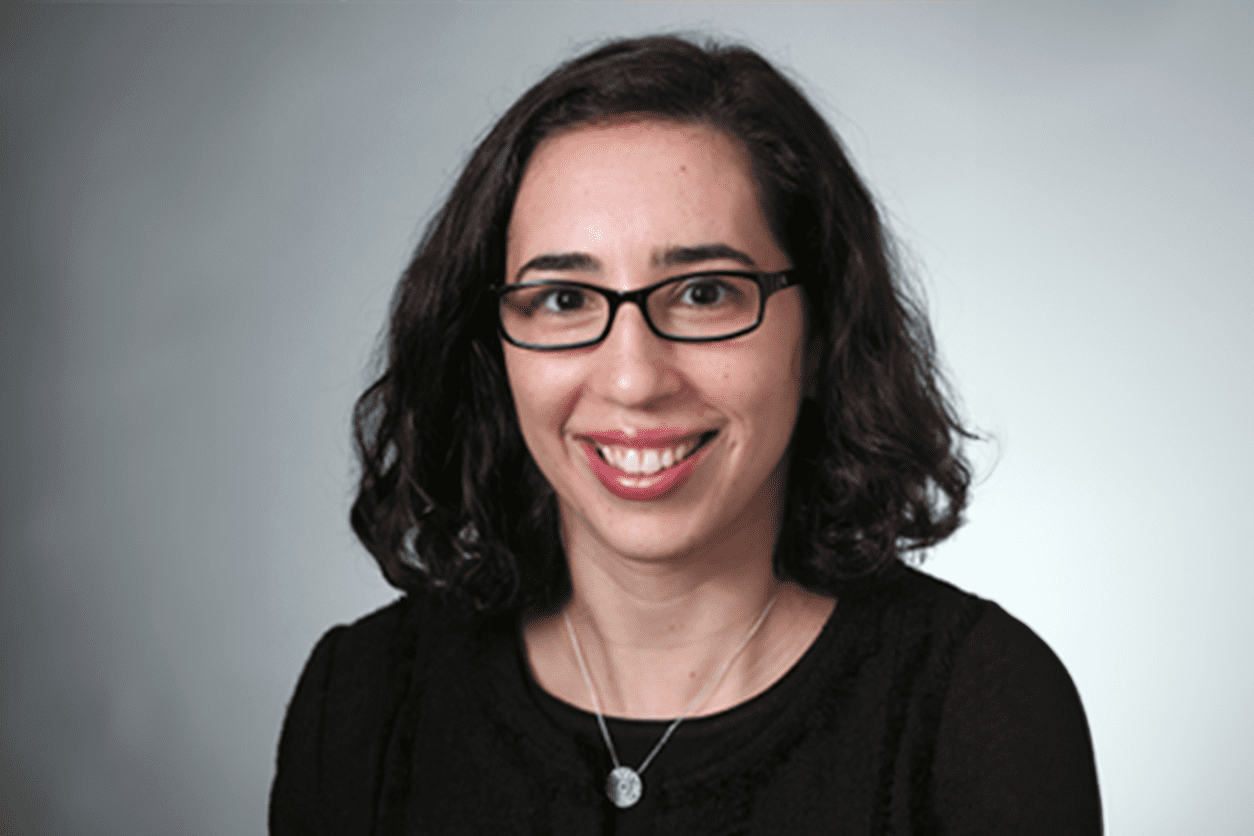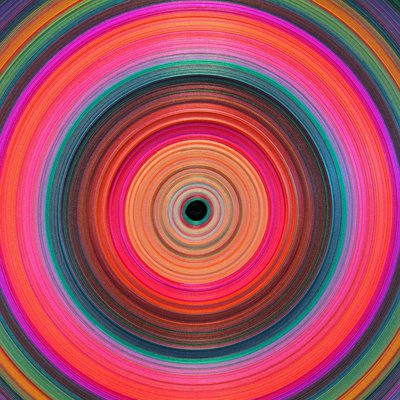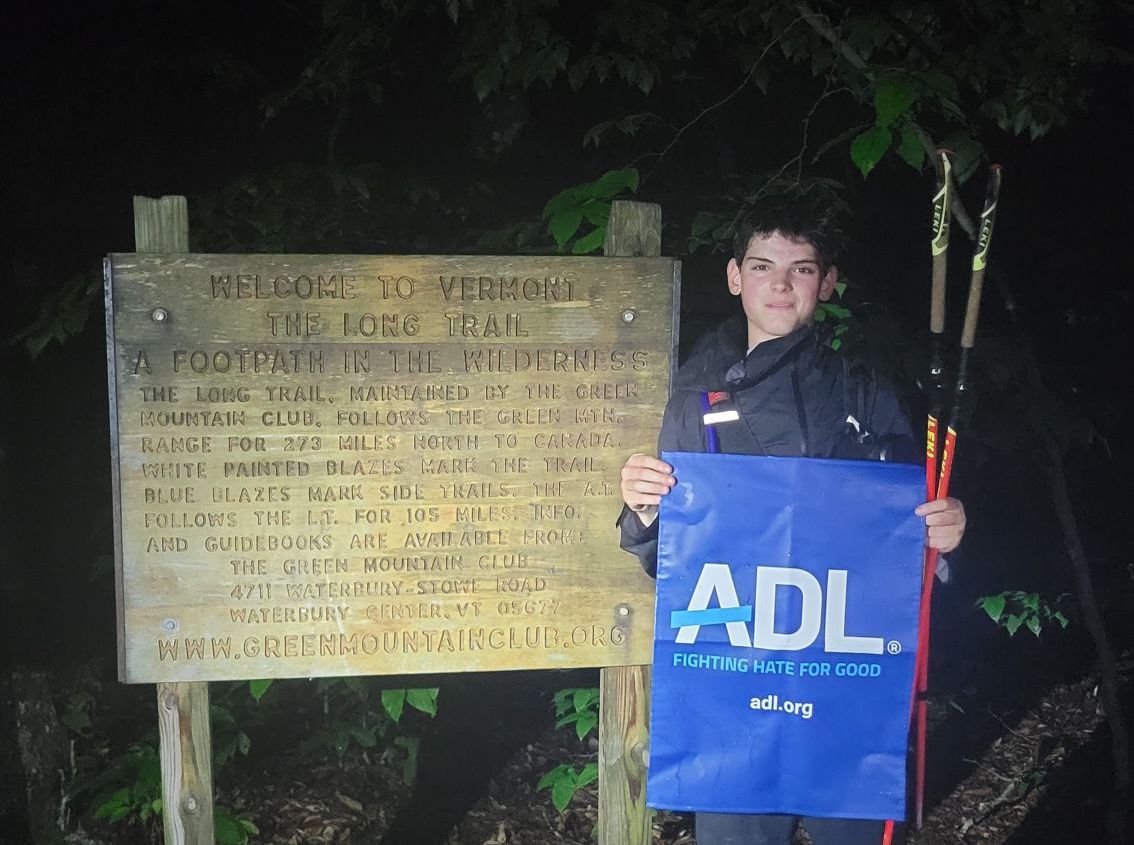Persona: Friends & Allies
Opening Remarks From Rabbi Marc Baker at ADL New England’s The Good Fight Forum 2023
Rabbi Marc Baker, president & CEO of CJP, shared his opening remarks at ADL New England’s The Good Fight Forum on Oct. 10, 2023, a community event dedicated to combating antisemitism and hate.
Dear Friends,
As we’ve already heard, we are here this morning at an unprecedented time in this history of the State of Israel and the history of the Jewish People.
Several years ago, this gathering, this Good Fight, was created as a response to the most horrific and deadly antisemitic attack we had ever experienced here in America – the Tree of Life shooting. It devastated the Pittsburgh community, touched many people here in our own community, and in many ways changed Jewish life in America as we now know it. Let us keep the Tree of Life victims in our hearts and minds today and always.
We are here because the hatred that has plagued the Jewish community and the world for thousands of years is not only alive and well, but still growing here in America and right here in our own community – in schools, on college campuses, from the egregious displays of white supremacists blaming 9/11 on the Jews to casual workplace conversations and the social media of pop stars and professional athletes.
This morning, we are here one day after thousands of us gathered on Boston Common to stand in solidarity with Israel and to raise our voices – together with friends, allies, elected officials and other local leaders. We gathered to express our love, solidarity, grief, anger, and moral outrage at the horrific and heinous acts of terror that have taken over 900 innocent Israeli lives. The Good Fight taking place right now in Israel is a war to protect the innocent lives of our Jewish family thousands of miles away and to protect the future of the Jewish homeland.
And this is not just far away – it is already touching nearly every one of us in some way or another, whether one of the tens of thousands of Israelis living here in Greater Boston or American Jews who have friends and family living in Israel and defending the Jewish State. My personal friends and family had to go directly from yesterday’s rally to the home of dear friends to escort them the airport after they learned that their son-in-law – a young man with a tremendous spirit, love of Israel, and bright future ahead of him – was killed in battle.
My friends, in the past few days we have witnessed the largest, most gruesome massacre of Jews that I have seen in my lifetime and that we have seen since the Holocaust. We are here today to fight for our own safety and well-being and for the future of our community and this country; Israelis are in a fight for their lives; and we are living through the darkest moment of hatred and violence against Jews that many of us have ever known.
Add to this the vile and incomprehensible response that we have seen in the streets of Cambridge and on college campuses – a defense of terror and violence rooted in ignorance and extremist, antisemitic ideologies that demonize Israel and dehumanize Israelis, and that, in fact, threaten the safety, security and well-being of Jews, especially, but not exclusively, our young people.
We are here today to better understand these challenges and what we can do about them, again with gratitude to the partners and leaders from across our community who are doing this work everyday in so many different ways.
Put simply, we have work to do. We have work to do to educate, advocate, and mobilize our communities, along with friends and allies, to fight against all forms of antisemitism, especially right now against Israel-hatred, along with all other forms of bigotry and hate; to fight against forces of extremism, conspiracy theories and other forms of disinformation and demonization; and to ensure that every person can walk down the street and through the world with head held high with a sense of safety, security, confidence in their personal identity and belonging in the larger society of which we are a part.
We have work to do to create communities and a world where everyone – of every religion, race, gender, sexual orientation – feels free, safe, accepted, and valued.
We have work to do, which is why I’m so proud that over the past year CJP has partnered with ADL and so many other organizations to launch our 5-Point Plan to combat antisemitism and anti-Zionism. We will not likely eliminate a 3,000-year-old hatred in our lifetimes, but we will certainly be stronger and fight against it more effectively when we fight it together.
Together, we are educating and mobilizing our community. Together, we are putting faces and stories to the personal experiences of Jew-hatred through our Face Jewish Hate media campaign, and we are partnering with the Foundation to Combat Antisemitism’s national blue square campaign so more people who share our values will #StandUpToJewishHate.
Together, we are expanding community security to ensure that we and our children will be safe and secure as we choose to live engaged, vibrant, joyous Jewish lives in our schools and synagogues and community centers.
Together, we are deepening relationships with allies and leaders from across civic Boston because this is not a Good Fight that we will win alone, and as my friend, JCRC CEO Jeremy Burton, always reminds us, antisemitism, like other forms of hate, is not a problem for the Jewish community to solve on our own.
It was heartening, comforting, even inspiring to launch our Face Jewish Hate campaign at TD Garden side by side with important and influential political and faith leaders; just as it was heartening yesterday to hear the unequivocal support for Israel and condemnation of terror from so many of our friends, allies and elected officials. That only happens because of the work ADL, JCRC, so many of the partners here today, do to deepen these relationships, to stand with and show up for other vulnerable communities, to fight for democracy, human dignity, and for the character of our commonwealth and our country. I feel grateful and hopeful that we are in this fight, this Good Fight, with friends and allies who will stand with us, and that we are in this with one another, together.
Thank you.
A Deep Dive Into Cyberbullying
By Rich Tenorio
Bullying is bad enough, but with kids on social media all the time, cyberbullying can be just as bad, if not worse. And it’s sometimes antisemitic in character, depending on the target.
“A lot of bullying and cyberbullying go hand-in-hand,” said Jinnie Spiegler, director of curriculum and training for the Anti-Defamation League. “It’s rare when bullying in-person does not make its way to the digital world. Usually, it’s both.” However, she noted, cyberbullying “is unique from other bullying and can be particularly harmful.”
WHAT IS CYBERBULLYING?
Occurring in digital spaces such as a computer or smartphone, cyberbullying includes hurtful comments, posting private information, posing as someone else to harm their reputation and forcible exclusion from groups online, she said.
Cyberbullying has increased dramatically in recent years and poses added dangers for tweens and teens. Unlike traditional schoolyard bullying, in which there is some relief when the school day ends, cyberbullying can occur at all hours, limiting the ability of trusted adults, such as parents and teachers, to notice and/or help. Instead of private locations such as the back of a classroom or school bus, cyberbullying can manifest itself through public posts online, potentially harming someone’s reputation for years—including, ironically, the individual committing the bullying. It can persist on digital devices indefinitely, unless a social media platform removes it.
The Cyberbullying Research Center tracks the phenomenon among 12- to 17-year-olds. The overall cyberbullying victimization rate among that demographic stood at 18.8% in 2007, the year Apple rolled out the iPhone. By 2019, the rate had risen to 36.5%; in 2021, it increased yet again, to 45.5%, nearly half of young people in that age bracket.
Spiegler said the ADL’s view of bullying draws upon common characteristics—it is repeated, threatening behavior, committed by one or more individuals with a perceived power differential over their target. That power differential can include hostile stances toward marginalized groups, such as Jewish, Black or LGBTQIA+ communities. For example, read what happens when antisemitism and anti-LGBTQIA+ hate converge. It is this identity-based bullying and cyberbullying that the ADL is marshaling its resources against.
“We tend to use examples like antisemitic cyberbullying, racist cyberbullying or bullying,” Spiegler said. “You’ll see this a lot, especially in the teenage years, bullying targeted toward a particular group or person. A lot of times, what they say is racist or antisemitic or homophobic, things like that.”
WHAT TO DO ABOUT CYBERBULLYING
Although cyberbullying can be dismaying, like bullying in general, its targets do have options, from managing their settings online to asking that social media platforms remove hateful content.
Spiegler’s suggestions:
- Be an ally, supporting the target even if you don’t know them.
- Don’t participate in cyberbullying if it comes up. Other people will notice your nonparticipation, which may lead them to do the same.
- Tell the oppressor or oppressors to stop, either publicly or privately.
Remember that you don’t have to confront the person doing the cyberbullying and that this is often the safest approach. When it comes to directly communicating with a cyberbully, she recalls a lesson from her anti-bias work: “If there’s antisemitic or racist remarks, why are you going to feed into that?” Instead, she counseled, “Understand where the person is as an individual [and don’t] feed into that kind of groupthink.”
In general, she said, “There are strategies for staying safe online. Don’t respond, save screenshots if you need them later, reporting them to trusted adults.” And, she said, “you can report abuse to the companies,” whether it’s Facebook, X or even a Nintendo or Sony Playstation game. (Read more about why reporting antisemitism matters.)
“As kids get older,” she said, “they’re less and less likely influenced by a parent or trusted adult. Young people have to help each other move from bystanders to allies.”
Rich Tenorio covers antisemitism news for JewishBoston.com. His work has appeared in international, national, regional and local media outlets. He is a graduate of Harvard College and the Columbia University Graduate School of Journalism. He is also a cartoonist. Email him at richt@cjp.org.
How To Teach Kids About the Painful History of Swastikas
By Kara Baskin
Swastikas have become sadly ubiquitous—as graffiti in schools, cemeteries, on bridges and flags. In response, Lappin Foundation just launched a moving short film, “Swastika – Symbol of Hate,” to teach middle- and high-schoolers about the true, brutal meaning behind the symbol.
Most importantly, they hear from Holocaust survivors Magda Bader and Dr. Hans Fisher, whose lived experiences crystallize the terror and pain that the swastika provokes.
“We were given orders to get out of the cattle cars fast, and we were told that we would see each other in a voice that you try to believe …. I was holding onto one of my sister’s and my mother’s hand. Even though I just turned 14, I looked 10 or 12. I was attached to my mother. Because of the orders, and you were told you’d see each other, I let my mother’s hand go. … That’s the last time I saw my mother,” Bader recalls.
It’s important to know the history and what to do when you see a swastika. Lappin Foundation executive director Deborah Coltin shared more about the new film, which comes with a guide for educators.
What inspired the video?
What inspired the video is, sadly, the number of incidents involving swastika graffiti in our communities. Over the past few years, I’ve been increasingly invited to schools where swastikas appear to do a lesson about its meaning. In the beginning, it was high schools. And then it was middle schools. And then, last year, I was invited to a school with younger children in grades four to six. And that’s really troubling.
I thought, “How do you begin the conversation?” I was searching for a video, because sometimes that’s a good opener. There was absolutely nothing that I felt was age-appropriate. I felt there was a real need for it, especially geared to middle school ages. Where did the symbol come from? What does it mean today, and why is it so upsetting? I also thought, if I could have Holocaust survivors talk about that piece of it, what a wonderful way to preserve their memory and have them impart a lesson to the students. And I believe that the film accomplishes that in 7-plus short minutes.
How did you pull these components together? The film is short, but it’s impressive, and it’s powerful.
I knew I wanted a simple, straightforward history. I’d been working with survivors Magda Bader and Dr. Hans Fisher. Both of them come from a very different experience. Magda survived Auschwitz. Hans was a passenger on the MS St. Louis [a ship that left Germany in 1939 to escape rising antisemitism]. So, he was the students’ age, and he escaped. He calls himself an escapee of the Holocaust.
Their messages are so important. Sometimes, a swastika appears in a school, and then there’s a reaction from parents and the community, with all good intentions, but I don’t know how much education actually goes into teaching them about the symbol. I think that’s the missing piece. Our kids’ worlds are full of symbols. They communicate with emojis. Symbols evoke emotion. And the swastika represents the most evil time in humanity.
This suggestion came from a student: Schools could use it as part of their orientation. They hear about bullying. They hear about all other kinds of name-calling. And so, because of the prevalent rise in antisemitism in our country, our students should be taught what this is and why it’s bad. They’re not going to get it by osmosis. And I believe this film is one way to do that.
Any guidance on contextualizing the video for various age groups?
It’s for middle school and older, for sure, and, with great care, older elementary students. Our teachers’ guide provides background, a synopsis and how teachers can introduce the film. And for teachers themselves who might not have background on the Holocaust, I provide resources for them as well, in addition to full-length interviews with Hans Fisher and Magda Bader. In addition, if educators want to learn more about the swastika and do a deeper dive, I provide resources for that.
My older son is in middle school, and we often hear about swastika graffiti there. Why? What inspires this among kids?
I don’t know what triggers it, but I don’t believe there’s been enough education proactively, preventatively, about what the swastika is. I believe students who do it know that, when it’s discovered, it’s something that gets a reaction out of adults. That’s just conjecture on my part. But I don’t believe there’s been enough education—straightforward, clear, simple, at their level—about what this is.
If you were to summarize the film and its effect in a sentence, what would you say?
I hope students will have felt something: the pain of the survivors, how devastating the Holocaust was and to have the awareness and the knowledge of what the symbol means. My hope is that they are able to articulate that this is a symbol of hatred and destruction. If they can walk away with that, I think the goal has been achieved.
Learn more about what teens really think about antisemitism.
Kara Baskin is the parenting writer for JewishBoston.com. She is also a regular contributor to The Boston Globe and a contributing editor at Boston Magazine. She has worked for New York Magazine and The New Republic, and helped to launch the now-defunct Jewish Rock and Roll Hall of Fame. Email her at kara@jewishboston.com.
Stay informed with our antisemitism newsletter
Organizations Fighting Antisemitism Receive Grants From CJP
Next month we mark the five-year anniversary of the Tree of Life massacre, and the fight against Jewish hate continues. Antisemitism is intensifying across the country, with a marked surge in bomb threats and swatting attacks of Jewish institutions, extremists publicly gathering in communities, the highest number of reported antisemitic incidents, and the spread of antisemitic propaganda on social media. But at the same time, mainstream public conversation on antisemitism has shifted significantly over the past five years. With the first-ever national strategy to combat antisemitism being released and strong displays of cross-community solidarity, we collectively must meet this moment to strengthen and empower the Jewish community to advance innovative solutions and collaborations.
CJP’s groundbreaking new fighting antisemitism initiative has recently launched to increase our local efforts and resources on antisemitism and to facilitate a stronger collective effort centered on collaboration, coordination, and partnership in a way that meets the urgent needs in our Greater Boston community.
The initiative will be moving forward work across CJP’s 5-Point Plan to combat antisemitism, raise public awareness, increase community engagement, deepen allyship across communities, increase educational resources, and strengthen communal security. Following the successful launch of our public awareness campaign, Face Jewish Hate, CJP is proud to announce our inaugural and initial grants allocated to strategically implement Year 1 priority areas of the 5-Point Plan.
They include:
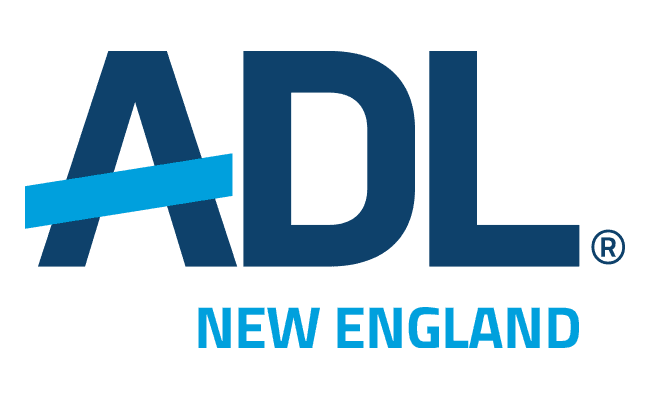
ADL New England to drive forward increased incident reporting and response, expand education programs in schools and campuses, and bridge building work between Jewish and Black communities.
“Since 1913, ADL has empowered our community to confront antisemitism through our mission to ‘stop the defamation of the Jewish people and security justice and fair treatment to all.’ This Plan allows us to provide our community with tools to confront antisemitism, and expand our incident response, vital in the wake of recent swatting attacks. We will deepen our education and outreach to schools, campuses, and the workplace as we build allies in the fight against antisemitism.”
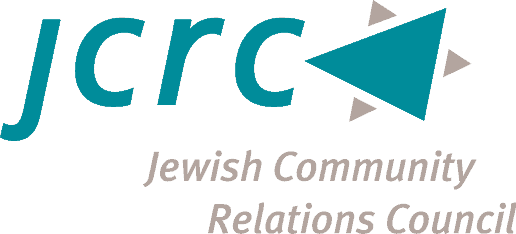
JCRC (Jewish Community Relations Council) of Boston to advance community and government relations at the state and municipal levels to address antisemitism.
“JCRC exists because our network of organizations and leaders believe that the safety and the interests of our Jewish community can only be achieved – at least in part – through our engagement in, presence in, and relationships in Boston’s broader civic space. Our work as JCRC is the weaving of networks of relationship – within and beyond the Jewish community – to facilitate pathways for articulating and advancing our shared interests, including working in allyship to fight antisemitism and hatred in all its forms. This plan supports the JCRC network to invest in the work of building and being allies with others in our region, advocating on matters of security to our state and local officials, and working together to ensure that Jewish identity and experience are represented without bias in our public schools.”

American Jewish Committee (AJC) of New England to amplify their work with diplomats, elected officials, and interfaith leaders at the local level to address antisemitism.
“The proliferation of antisemitism in New England and across the country is an historic challenge. Fortunately, unlike in past eras, we have the wherewithal to meet this challenge. What it requires is sustained strategic focus and a mobilized Jewish community. We are glad to work with CJP and other organizations from across our community to coordinate and amplify the work we do. In this way, we will steadily work to mitigate the dangers posed by anti-Jewish activism and ensure a healthy future for our Jewish community.”

JOIN for Justice to launch the SEA (Study, Engage, Act) Change program for congregations in the Greater Boston area on racial justice and deepening allyship.
“To face the scourge of antisemitism, we won’t be satisfied by asking people to stand with the Jewish community after we are attacked. One critical component needs to be developing the leadership of Jews, at the grass roots level, across all races and identities, to build relationships with people across all religions, races, and identities. Then, they can stand together, as allies, with the power to fight all hatreds and oppressions and build a more just Greater Boston where communities unite to stop oppression before it happens. We’re thankful for CJP’s vision and leadership in enacting this comprehensive plan.”
Facing History and Ourselves to significantly increase the availability of content, resources, and professional development for Greater Boston educators on Holocaust education and antisemitism:
“We are grateful to CJP for convening organizations from across the Greater Boston community to combat antisemitism. The education pillar of this work is a critical aspect in helping students become compassionate and engaged upstanders who understand the importance of their choices. The only means to a better tomorrow is by working on today. We, at Facing History and Ourselves, continue to effectuate change by helping educators establish inclusive and reflective classroom community that can thereby provide space to combat prejudice, stereotypes, and bigotry.”

Tribe Talk to increase and deepen educational resources and programs for pre-college students on antisemitism.
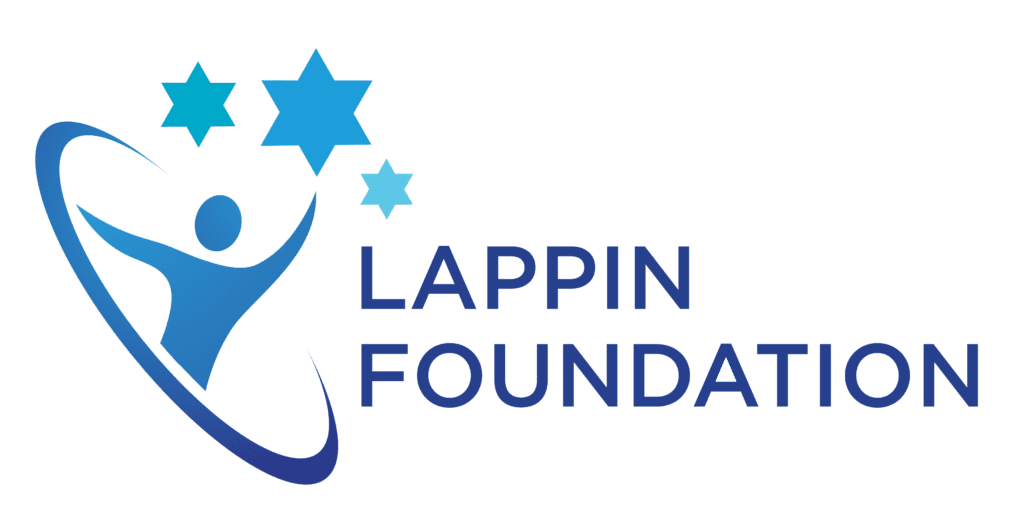
Lappin Foundation to support teen antisemitism work.
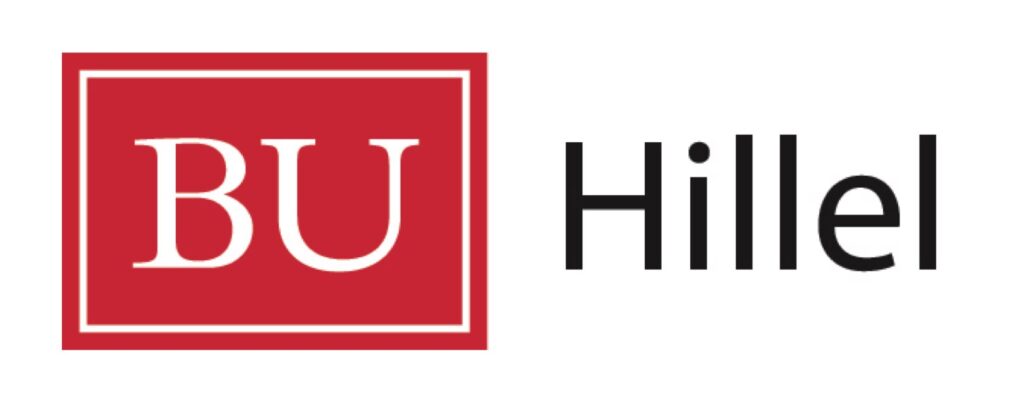
Boston University Hillel to continue its antisemitism initiative as a potential scalable model for the broader community.
CJP is thrilled to roll out the grant funding to these partners and to coordinate this work. In the weeks and months ahead, we will continue to work to amplify and measure the impact of this work in our efforts to strengthen the tools for our community to combat antisemitism.
Answering the Call: From Boston to D.C., United Against Xenophobia
By Rebeccah Lipson, Repair the World Fellow, Boston
This summer marked a significant turning point in my journey as I embarked on a new chapter with Repair the World, an organization that mobilizes Jews and their communities to actively pursue a more just world. Little did I know that this commitment would soon lead me and my dedicated team to a powerful moment of action: the 60th anniversary March on Washington.
As Rabbi Abraham Joshua Heschel once wisely noted, “The opposite of good is not evil; the opposite of good is indifference.” At Repair the World, we understand that our purpose goes beyond passive observation of the world’s injustices. It’s about stepping forward, taking action, and making a tangible impact. This philosophy, encapsulated by Rabbi Heschel’s words, has shaped my summer and propelled me toward the heart of a movement that echoes with historical significance and calls for a united stand against all forms of discrimination and injustice.
As the summer unfolded, my team and I grappled with the notion of responsibility. We spent hours at cafes, synagogues, and parks discussing the various forms of injustices Boston is facing. We recognized that we, as Jews, have a unique obligation to address and combat xenophobia in all its manifestations. The decision to journey from our base in Boston to Washington, D.C., wasn’t just a logistical one; it was an unequivocal statement of our commitment. We wanted to take what we learned and put it into action. This trip to D.C. was a manifestation of the Jewish value of na’aseh v’nishma, action and learning. We firmly believe that when given an opportunity to fight against forms of xenophobia, it is our duty to seize it.
The 60th anniversary March on Washington holds a special resonance for me, not only due to its historical significance but also because of the values it represents. Dr. Martin Luther King’s legacy reverberates through the decades, reminding us that the struggle for justice and equality is ongoing. As I stand on the precipice of this march, I can’t help but reflect on the parallels between the civil rights movement and the issues we continue to grapple with today, such as food insecurity and housing injustice that brown and Black Bostonians continue to face today.
The decision to march alongside CJP, in collaboration with ADL, speaks volumes about our collective determination. It’s a testament to the power of solidarity, achdoot, in the face of adversity. Our call to serve goes beyond the march. Our call to serve enables us to take direct action in the name of tzedek, justice. The march itself is a continuation of a journey that began 60 years ago, and we’re here to carry forward the torch of progress and equality.
Our dedication isn’t merely symbolic; it’s a reflection of our unwavering belief that combating xenophobia, racism, and discrimination is central to our identity as Jews. We’ve faced our own historical struggles, and that shared experience binds us to the broader tapestry of individuals who have fought and continue to fight for their rights. Just as we would expect others to stand with us against antisemitism, we recognize the imperative of standing with those who face other kinds of hate.
In a world where divisiveness can seem all-encompassing, this march becomes a beacon of hope. It’s a space where individuals from different backgrounds come together with a shared purpose: to reshape the future into one that’s inclusive, just, and equitable. It’s a moment to amplify the voices of those who have been marginalized and silenced, and to challenge the structures that perpetuate inequality.
As we prepare to gather for Shabbat dinner with members of the King family and leaders of the march, the significance of our presence becomes even more palpable. It’s not just about showing up; it’s about actively participating in a service movement that’s greater than ourselves to change the world for the better.
I’m humbled by the journey that brought me here and excited about the journey that lies ahead. This summer, Repair the World gave me purpose, and, like Jewish service, this march gives me another opportunity to turn that purpose into action.
As Rabbi Heschel’s words remind us, our refusal to be indifferent is the spark that ignites lasting change.
Stay informed with our antisemitism newsletter
Allyship and the Work Ahead: Reflections From Washington, D.C.
By Melissa Garlick, Senior Director of Combating Antisemitism and Building Civic Engagement at Combined Jewish Philanthropies
On Saturday, August 26, 2023, CJP partnered with ADL New England to travel to D.C. to stand in solidarity with communities across the country for the 60th anniversary of the March on Washington for Jobs and Freedom. At the same time as we were marching, singing, and chanting, Black people were being gunned down and killed in Jacksonville, Florida, in a racially motivated attack.
The juxtaposition of themes of survival, resilience, and determination alongside the very painful reminder of the work ahead resonate deeply with me as a Jew and are exactly why I am so committed to deepening allyship as central to CJP’s work to fight antisemitism. As Reverend Jamal Harrison Bryant put it in his speech: “We are not the generation that is going to sit down and be quiet. If you don’t believe me, take a one-way trip to Montgomery, Alabama, and there you will find out that no weapon born against us will be able to prosper … 60 years later, we’re still not free, but we know how to last.”
In the Jewish community, we understand all too well that racist, antisemitic, and extremist violence are intended to push us into the realm of despair and silence. We stand on the shoulders of prior generations who bravely gave their hearts, souls, and lives to democracy and freedom for us to continue that fight. And we intimately understand that fighting antisemitism cannot be done in isolation from the struggle for racial justice. That the only way we are going to achieve our shared vision is to do it arm in arm.
CJP’s work to fight antisemitism is dedicated to the vision that our work now can inspire and empower future generations to ensure freedom and equality for all. And the vision that future generations can live and pray without the threat to physical safety and security.
In the meantime, we march on and we push forward: loudly, proudly, and together.
Stay informed with our antisemitism newsletter
Listen In: How To Respond to Antisemitism
Melissa Garlick, Senior Director, Combatting Antisemitism and Building Civic Engagement, talks on Movin’ and Groovin’ with Ellen Kagan about antisemitism: what it is and how to respond. Melissa also talks about the National Strategy to Counter Antisemitism that the White House shared, which is its first national plan ever directly addressing Jewish hate.
Stay informed with our antisemitism newsletter
The Power of One to Make a Difference
By Melissa Garlick, Senior Director of Combating Antisemitism and Building Civic Engagement at Combined Jewish Philanthropies
I have dedicated my professional life to combatting antisemitism and hate and have realized that the starting place for this work is a hard acknowledgement that antisemitism can’t be solved with just one magic solution. With increasing incidents of antisemitism, violence, and division in our country, the feelings of despair can overwhelm and sometimes distract from the mission. But every day, individuals in our communities are choosing to use their power by lifting their voices, sharing their stories, building solidarity, and raising awareness.
I am personally inspired by recent stories that highlight the power of one to make a difference in this work—including the bravery of Chanie Krinsky, who shared her story and her voice in NBC’s coverage on the rise of antisemitism in Massachusetts, and the determination of Arlington High School senior Cooper Katzman, who hiked 275 miles to raise money for the ADL and the fight against antisemitism.
Each one of us has the power and the responsibility to take action in the collective work to combat antisemitism. We can draw inspiration and motivation from people like Chanie and Cooper as we strive toward a future where all Jewish people are able to live proudly and safely.
Here are some action steps you can take to make a difference in fighting antisemitism:
- Educate yourself and become a better advocate—knowledge is power. Do you know how to talk about and intervene with antisemitic tropes and myths? Do you know how to explain them and their impact on you? Check out the ADL’s Guide to Antisemitic Tropes and learn more.
- Raise awareness—use your own voice to elevate the problem of antisemitism and the impact on you and your community. Write in local outlets, engage in public conversations.
- Be a good ally—and remember, antisemitism is not only an attack on the Jews. Understand how antisemitism intersects and often is found with other “isms.” Build meaningful relationships across communities and reach out to others in times of need for solidarity.
- Celebrate and find joy. Proudly displaying Jewish identity and finding times of joy are essential to the fight against antisemitism.
Stay informed with our antisemitism newsletter
Teen Hiked 275 Miles to Combat Antisemitism
By Kara Baskin
While some high schoolers were kicking off their summer by sleeping in, Arlington High School rising senior and athlete Cooper Katzman was hiking 275 miles to raise money for the Anti-Defamation League. From June 26 until July 4, he walked Vermont’s Long Trail—often in the soaking rain—from Canada all the way to Massachusetts.
He dedicated each day of the journey to a horror caused by antisemitism, from Brighton Rabbi Shlomo Noginski’s 2021 stabbing to Pittsburgh’s 2018 Tree of Life Synagogue shooting. While Katzman initially set out to raise $1,800, he collected over $6,000. I spoke to him about the emotionally and physically transformative trek.
How and why did you decide to embark on this journey? I bet a lot of people your age would be pretty overwhelmed by the prospect.
I did my first real backpacking trip in the summer of 2020 with my cousin, about 60 or 70 miles of this trail. I’ve been surrounded by people like my dad, who’s very good friends with [renowned trail-runner] Joe McConaughy, who has been my biggest inspiration. I push myself to the limit to see how fast I can go.
Tell us about the ADL aspect. Is this the first time you ever did such a rigorous hike for a major cause?
I had never done something like this. But Joe had gone for a fastest-known time in honor of the Black Lives Matter movement in 2020. Obviously, I’m not going to have as many people viewing my story, but I do have this platform. I felt I had a responsibility to do something to affect my community.
From a teenager’s perspective, what’s going on in your community? You write on your fundraising website about the rising tide of antisemitism.
At least since I’ve been in middle school, there’s always been stuff at Arlington schools. Antisemitic graffiti has been the biggest one, and a rabbi’s house was burned. While I’ve never been attacked for being Jewish, I know all these stories. All these things are happening around my community. In the hike, I [honored] Steve Ross, who my family was very close to. He was a Holocaust survivor. My family has a lot of connections to people who have been very affected by antisemitism. I feel connected to those attacks. Even though they weren’t hurting me, they were taking away from my community as a whole.
Let’s talk about the physical endurance required, as well as the emotional and mental breakdown of how you did this. How did you mark each day?
I had a lot of time to think and process. The weight of the responsibility on my shoulders motivated me and kept me going. There were many points when even my dad said, “You do not have to keep going.” My feet hurt; my legs burned. Everything was uncomfortable. I was wet. It felt like I had no reason to keep going, but there was just that little voice in the back of my head telling me that I had chosen this path and chosen this responsibility. I felt that it really kept me going.
Tell us about the fundraising. It seems as if you set a modest goal for the ADL, and you really exceeded it. What was that experience like?
Honestly, that was way crazier than I imagined. I had set the goal at $1,800, because “18” is symbolic in Judaism. My parents shared with their friends and our family, and it seemed like a reasonable goal. Within the first few hours, I had gotten $2,000 in donations, and I was just completely surprised. And then, as I kept going, [noted trail-runner] John Kelly’s wife took a picture of me. She posted it to their website, and then I started to get all these donations from the United Kingdom—people I didn’t even know. It was way more support than I ever could have imagined.
What advice would you give to someone who’s setting out to do something physically similar? It seems absolutely grueling.
I curse myself out a little for not training! But obviously I had done similar things like this before. I sort of knew what to expect, though I don’t think I’ve ever experienced discomfort like this. But I had amazing support. I also think that it’s really not to compare yourself to everyone else [in terms of time]. Stay motivated, which is hard. But everyone has a different path to get to the end, and I think everyone is capable of doing this if they put in the work, have the right mindset and stay positive.
What were your days like?
My time came out to something like eight days, 19 hours and 20-something minutes. I did it myself, and my dad would do three food drops. But the first day I saw the weather, it was pouring rain—for the next seven days. I actually did the first three days, going farther than I expected. By day four, I got back on pace. I dropped a few miles just to relax. Without my dad’s support, I couldn’t have done it. He did so much. He would hike in a couple of miles to meet me with food and water. He would carry my pack at points. The last day, I did about 40 miles, and he hiked about 33 of those miles with me.
One of his friends, Scott, would send me messages. He said: “I’m proud of you. I know you’ve already been out there a few days, and maybe some of those days have given you some tough times. It’s not always milkshakes and rainbows on the trail. You’ve got to work through those hard days so you can get to the good ones.” And then he sent me this quote from “Ted Lasso”: “The harder you work, the luckier you get.” Just those things from people who weren’t even there, just sending me support and love, was huge.
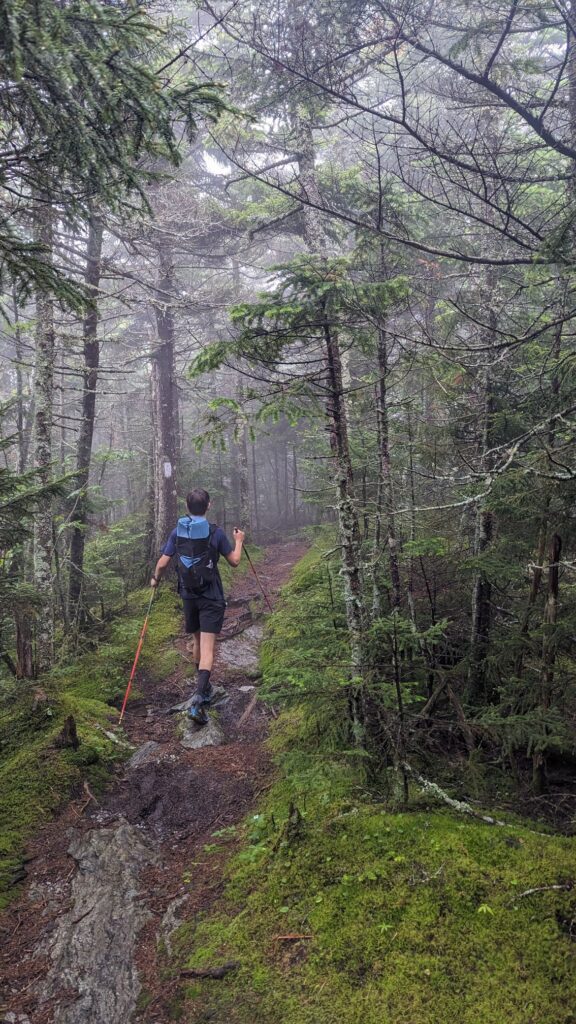
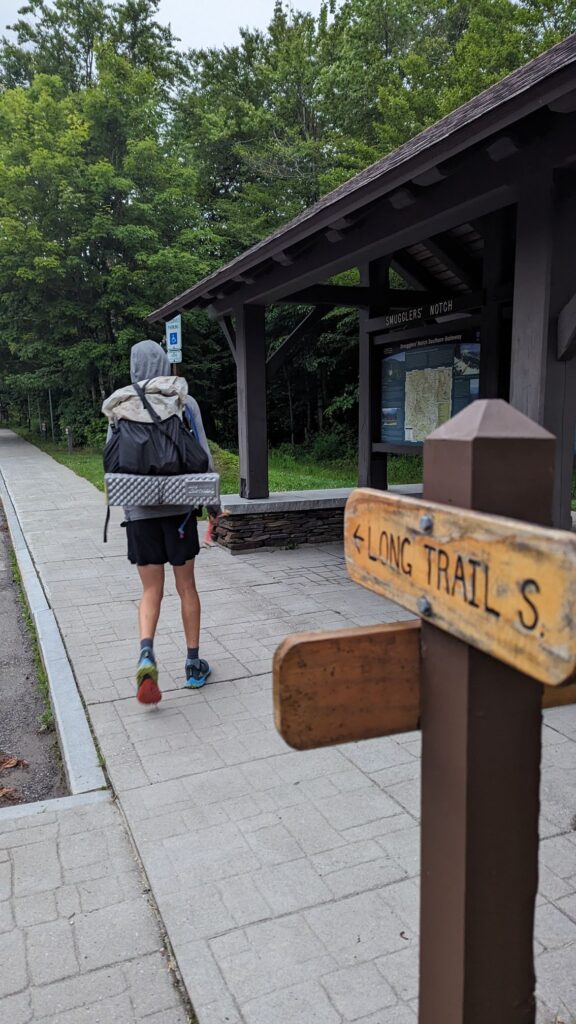
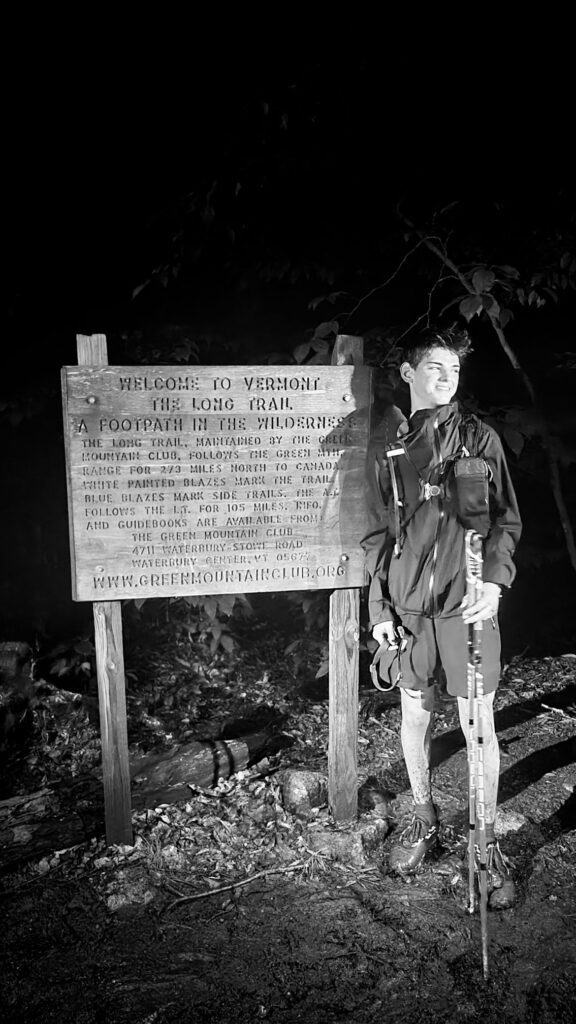
Do you have another journey planned?
In the moment, there were so many times when I was like: “Why am I even doing this? This sucks! This is the worst thing I’ve ever done! I’m so uncomfortable.” But as soon as I was done, I wanted to get back out and do another one. And, from what I’ve seen, doing something like this can give you a massive platform. So, I definitely want to try to do something like this again, to maybe raise awareness or support for either the same or a different cause.
Did you have an experience or epiphany during your journey that really crystallized why this cause, antisemitism, matters to you so much?
I had a lot of very meaningful moments not only with myself but with my dad. We were able to talk and have really great conversations. The last two miles of the trail, it was late, probably 11 p.m., and it was super-wet. The trail was soaked, just a puddle. And I just stopped talking. And for those two miles I was in the zone, in the flow, and I had a very clear picture in my mind of how every single person who had ever hiked the trail was just supporting me. Their power and energy were in my legs. That’s kind of how I felt throughout the whole thing. I just had this whole community, all of these people, sending me love and support, and it carried me and pushed me over the edge.
What would you say to other people your age who might not hike, but who want to fight and raise awareness against antisemitism?
Do what you love. Do what you have a passion for. People will see that. Hiking doesn’t have to do with antisemitism, but you can connect it. You can connect anything you have a passion for to whatever cause you’re trying to fight for. And I think people will see that passion, and people will support you. The more support you get, the more passionate you’ll get. It’s a cycle.
Kara Baskin is the parenting writer for JewishBoston.com. She is also a regular contributor to The Boston Globe and a contributing editor at Boston Magazine. She has worked for New York Magazine and The New Republic, and helped to launch the now-defunct Jewish Rock and Roll Hall of Fame. Email her at kara@jewishboston.com.
 Share your story
Share your story 